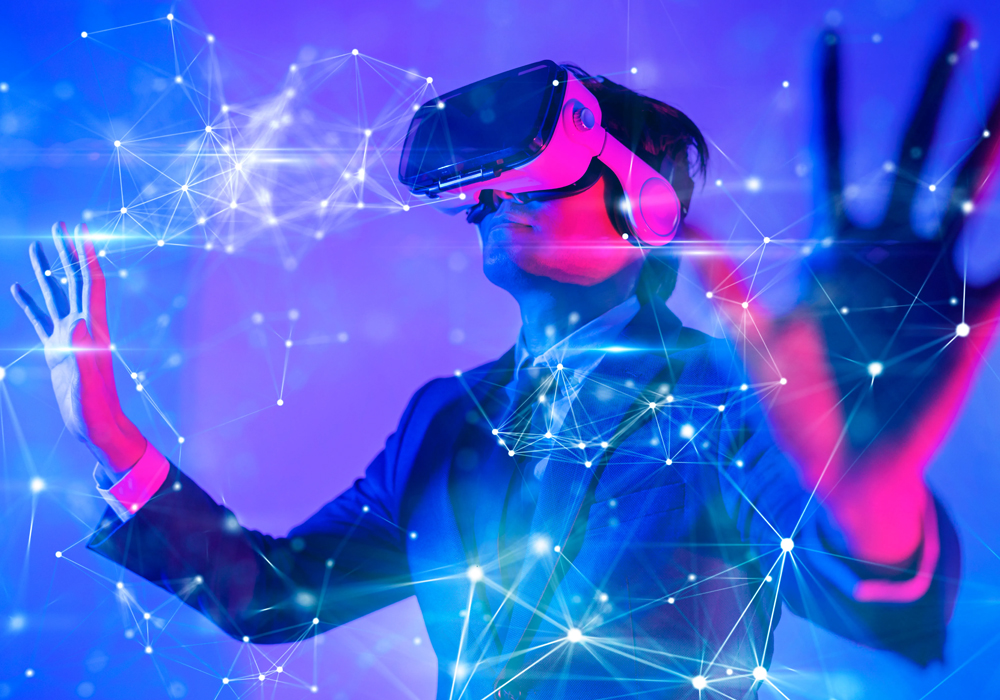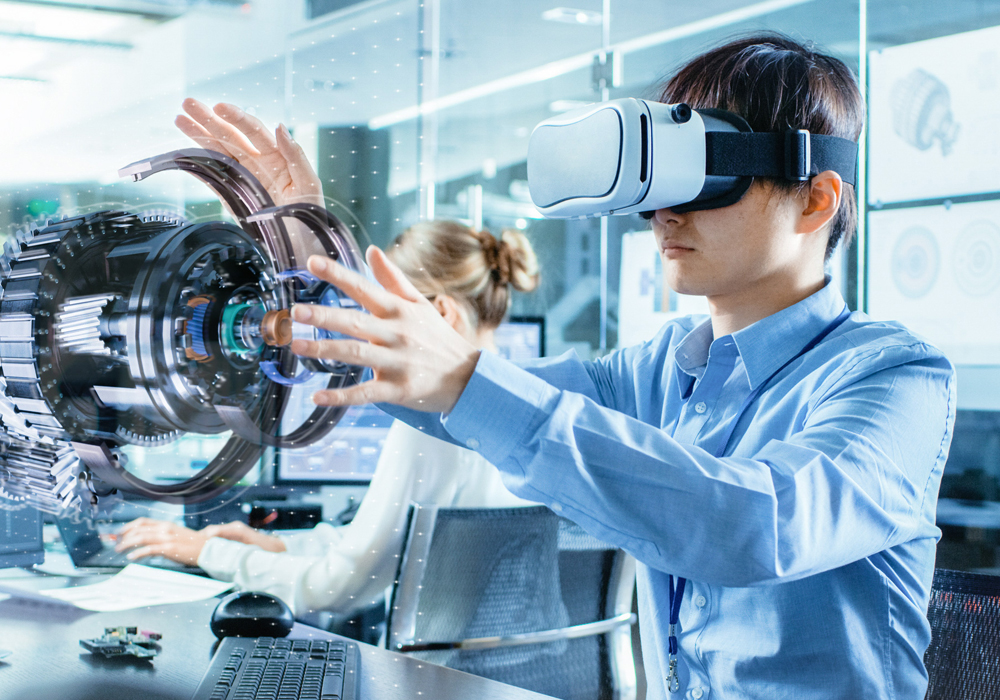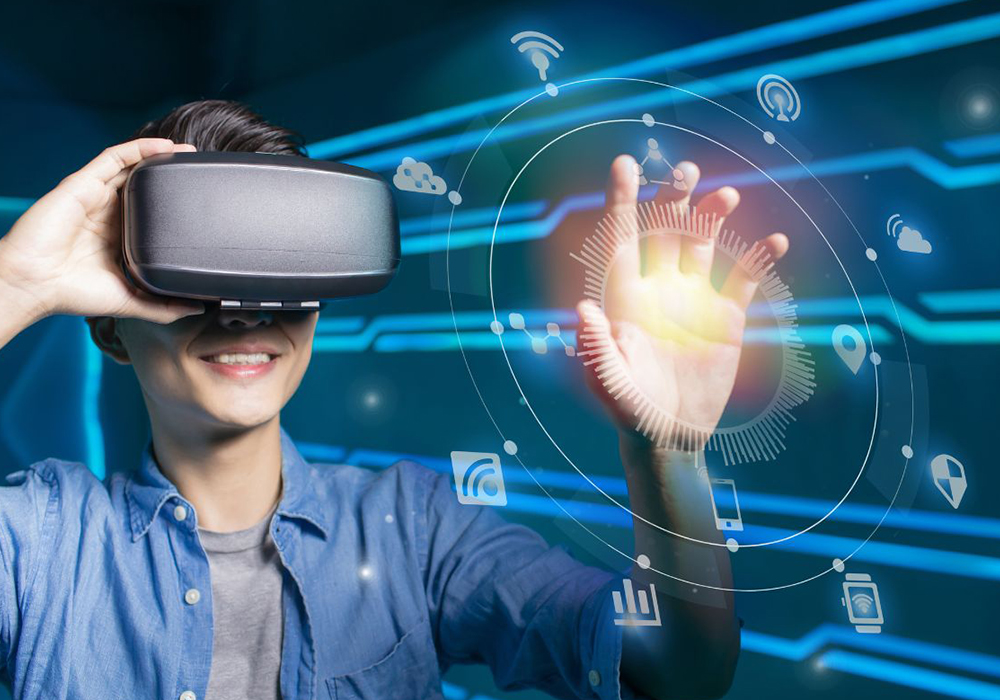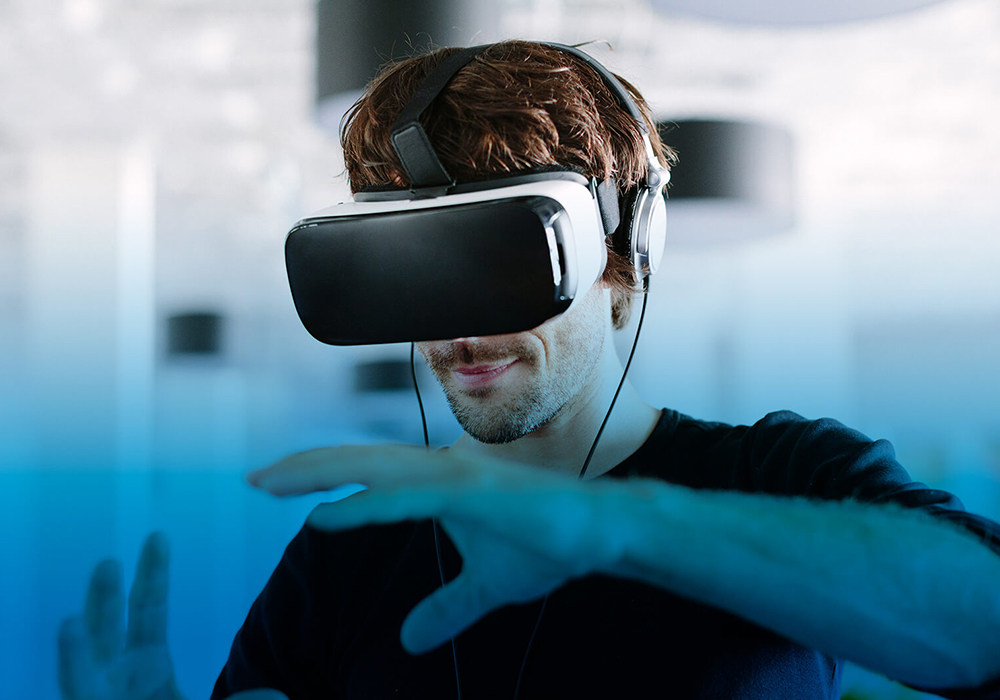With the advancements in technology and digitalization, tech experts have been trying their best to provide immersive and engaging experiences to users. The struggles to combine real-life experiences or reality with the digital world have yielded fruitful results. One such technology, Virtual Reality (VR), has made its name in the gaming industry and many other industries like education, health care, military, entertainment, etc. In this article, we will review what virtual reality is, its benefits and components, and lastly, what does the frame rate of a virtual reality headset indicate?
What Is Virtual Reality (VR)?

Virtual Reality (VR) is known as the process of using technology to create a reality-based virtual experience with the help of a computer device. This real-life virtual experience provides an option for the user to feel engaged and immersed in the environment with the help of a headset or helmet. The animation used for this tech advancement is 3D animation, allowing the user to control the setting or surroundings according to their preference. The statistical findings of Virtual Reality (VR) show the dominance and popularity of the technology in the world. Research has shown that there are 65.9 million users of VR types of equipment in the USA. Looking at the estimation of the worldwide users of this technology, 171 million users are taking advantage of VR types of equipment.
Benefits Of Virtual Reality (VR)

Like every other tech innovation, the application of Virtual Reality (VR) has proven to benefit consumers. Some of them are:
- A Unique Way Of Exploration
The first advantage of Virtual Reality (VR) is that it provides a unique way of exploration for the users. In other words, it allows users to experience a virtual environment or surroundings without needing to be there physically. For people who love exploring new places and have an adventurous nature, this technology has opened the door for exploration and thrill.
- Virtual Reality (VR) For Education
As mentioned earlier, the unique qualities of VR advancement have benefitted many industries, including the educational sector. The help of providing a practical and advanced learning environment has paved the way for a better understanding of the subject, a fun experience, and increased interest in learning for students.
- Real-World Experience
The different types of Virtual Reality (VR) enable users to engage in different kinds of real-world experiences. No matter what type of VR system is being used, the main goal of these types is to give users a memorable and fun real-world experience. The types of VR are
- Non-immersive VR Systems
A simple example of non-immersive VR systems is video games. Here, the user knows the surroundings and utilizes a monitor to enter and explore the virtually created world.
- Semi-immersive VR Sytems
A little advanced type of VR system is a semi-immersive VR system. This type has the benefit of multiple input device connection along with a better visual experience or screen experience.
- Fully-immersive VR systems
This kind of Virtual Reality (VR) system provides a fully immersive experience of the natural world. It includes the usage of headsets and helmets that the users have to wear to enter the realm of a virtual world.
- Practical Application Of Virtual Reality (VR)
Let me clear out the misconception that Virtual Reality (VR) is limited to fun and entertainment. The world of VR is something more than that. It has helped in practical learning and applying many skills required in different fields. The benefit of practicality makes it easier for people to improve their skills and expertise without investing a lot of energy and effort.
- Cost-Effective
Lastly, Virtual Reality (VR) is suitable for many purposes as it is a cost-effective solution. The initial installation of the system requires some amount, but after that, the budgeting or cost is pretty low for the maintenance and usage of the device.
You May Also Like:
- How To Develop an E-commerce App For Mobile Phones
- A Step-by-step Guide On How To Become A Blockchain Developer
Industries That Have Benefitted From The Advancements Of Virtual Reality (VR)

Before moving further to the technicalities and components of Virtual Reality, let’s review a list of sectors or industries that are now utilizing VR technology and are getting fruitful results from it with no wasted time and energy.
- Education Industry
- Medical or Health Care Industry
- Automotive Industry
- Retail Industry
- Travel and Tourism Industry
- Interior Design Industry
- Architecture Industry
- Military Industry
- Gaming Industry
- Recruitment Industry
- Learning and Development Industry
- Sports Industry
- Art and Design Industry
- Marketing Industry
- Recreational Industry
Essential Components Of Virtual Reality (VR)

If you are someone who loves learning or exploring the technicalities or components of different devices and gadgets, then you do not want to miss this section of the article. To understand how Virtual Reality (VR) works, it is crucial to understand its components or elements, their purpose, and their working. This will give you a better understanding of the system and allow you to differentiate it from other tech devices or gadgets.
- Computing Device
The 3-dimensional reality is processed and created by a robust, dynamic machine known as a computing device. It receives data from all other input devices, tracks human movement, and generates all visuals. To smoothly perform all of these tasks, a computing device needs to have a good amount of Random Access Memory (RAM), a good Graphic Processing Unit (GPU), a strong Central Processing Unit (CPU), and enough memory storage.
- Sensors
Most VR sensors are built into the virtual reality headset. The purpose of these sensors is to keep track of users’ postures and head positions, as well as movement and rotation. While performing these tasks, it sends this information to the VR processor. The user can engage with the virtual world through these functional and efficient sensors. A Virtual Reality (VR) system includes multiple kinds of sensors, such as magnetometers, accelerometers, gyroscopes, and 6DoF.
- Head-Mounted Displays (HMDs)
HMD is a head-mounted display. VR devices have two displays that present the user with the virtual environment. Motion sensors detect the user’s head’s direction and location, which causes the picture to be adjusted accordingly. Not only that, but HMDs also can contain audio output ports for external speakers or built-in headphones. The unique and innovative element of the blackout blindfold enables the users to be entirely cut off from the outside world and fully immersed in the virtual world.
- Audio System
Audio systems play a crucial role in creating an outstanding user experience that ensures that the user feels like a part of the virtual world. The majority of audio systems are incorporated within the HMD. The quality of a functional spatial audio system gives consumers a sense of how authentic the virtual environment is.
- Input Devices
Input devices play a huge role in controlling the overall experience of Virtual Reality (VR) experience. Users interact with the virtual environment in front of them through different input devices. These gadgets may be tools or weapons to elevate the whole adventure. Some examples of input devices are mice, controllers, joysticks, gloves with sensors, and body tracking systems.
- Software System
VR systems require proper working and top-quality software. The purpose of a software program is to operate on VR gear and generate a synthetic environment. The software comes in various forms depending on the VR-based environment’s purpose and the customers’ needs or wants.
You May Also Like:
- How Is A Game Designer Different From A Game Writer?
- How To Learn Unity Game Development?: An Overview
What Does The Frame Rate Of A Virtual Reality Headset Indicate?

Have you ever imagined what goes into the process of display and visual graphics of a Virtual Reality (VR) experience? Or how does the whole process of screen display work? If yes, the answer is simple but involves a deeper understanding of the concept. Picture display in VR systems is made possible through the proper functioning of the device’s frame rate.
What Is The Frame Rate Of A Virtual Reality Headset?
The frame rate of a virtual reality headset indicates the number of pictures displayed in a second. To obtain a smoother and higher visual experience, the frame rate of the headset has to be high, or else the visual experience will be blurry or flawed.
What Is The Recommended Frame Rate For Virtual Reality (VR)?
According to research, the ability to process frames in a human eye is 60 frames per second. This means that for a VR experience to be smooth, the headset should have a 60fps frame rate. But it is not necessary as the tech advances always focus on upgrading the process and providing a unique experience for the users. Popular Virtual Reality (VR) companies like HTC and Oculus have recommended that a 90fps frame rate would be better to guarantee a smooth-running VR experience. This means that the virtual reality headset will display 90 frames of pictures per second.
Importance Of Frame Rate In Virtual Reality Headset

VR investments require a lot of research and in-depth knowledge regarding the features and qualities so that you will get value for money. Tech professionals hold the view that the frame rate of a virtual reality headset indicates the working of the whole experience, and for this reason, it is crucial to look for a higher frame rate headset. Frame rate contributes to the entire experience in many ways, including
- The frame rate of a virtual reality headset assures the smooth functioning of the virtual experience.
- VR headsets can optimize the frame rate, allowing users to customize the settings according to their preferences.
- In order to improve picture quality, it is essential to have a reasonable frame rate.
- Increased frame rate assures eliminating adverse effects of poor working such as disorientation, nausea, headaches, etc.
Conclusion
No matter what reason or purpose it is serving, it is crucial for the VR system and virtual reality headset to function correctly. Tech professionals and experts try their best to keep up with the latest trends in the VR world so that they can incorporate proper working features to elevate the virtual-based real-life experience. If you are someone who is looking for further guidance and help related to VR development, the best way to do so is to connect yourself with a reliable digital company.
FAQs Related To Frame Rate In Virtual Reality Headset
Q: How does the frame rate contribute to the latency?
A: Lower latency is produced by higher frame rates, and vice versa. For a responsive virtual reality experience, low latency is necessary.
Q: What are the adverse effects of improper frame rate working?
A: Improper frame rate workings increase the chance of nausea, dizziness, headache, and disorientation.
Q: How can I improve the frame rate of my VR headset?
A: Steps like updating graphic cards, optimizing the game settings, and restarting the device might help in improving the frame rate.
Q: How much frame rate is recommended for a VR headset?
A: VR experts recommend that the frame rate of a smooth functioning headset must be 90fps.
Q: What does ‘fps’ indicate in the frame rate?
A: Fps is the short form of ‘frames per second,’ which indicates the number of picture frames to be displayed in a second.
You May Also Like:







